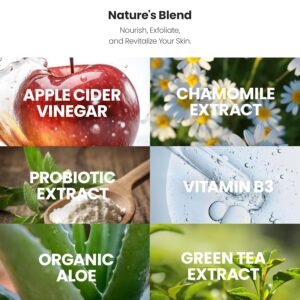
Introduction
Ever wondered how to get your website to the top of Google’s search results? It’s not magic—it’s science! On-page SEO and keyword research play crucial roles in this journey. Let’s dive into the art and science of SEO On-Page Keyword Research for 1st Page Google Ranking.
Understanding On-Page SEO
What is On-Page SEO?
On-page SEO refers to the optimization techniques you implement directly on your website to improve its visibility and ranking on search engines. This includes content optimization, HTML source code improvement, and more.
Key Elements of On-Page SEO
From meta tags to content quality, several elements contribute to effective on-page SEO. These include title tags, meta descriptions, headers, URL structure, internal linking, and more. Each element must be finely tuned to align with your target keywords and audience.
The Importance of Keyword Research
Why Keywords Matter
Keywords are the bridge between what people are searching for and the content you are providing. They help search engines understand what your content is about and match it with relevant search queries.
Impact on Search Engine Rankings
Using the right keywords strategically can significantly boost your search engine rankings. Well-researched keywords help attract targeted traffic, increase engagement, and ultimately improve conversion rates.
Types of Keywords
Short-Tail Keywords
These are broad and general keywords, usually consisting of one or two words. They have a high search volume but are often very competitive. For example, “SEO” or “keyword research.”
Long-Tail Keywords
Long-tail keywords are more specific and usually longer phrases. They have lower search volumes but are less competitive and more likely to convert. Examples include “how to do keyword research for SEO” or “best SEO tools for beginners.”
LSI Keywords
Latent Semantic Indexing (LSI) keywords are related terms and phrases that give context to your content. They help search engines understand the topic of your page better, improving your chances of ranking higher.
How to Find the Right Keywords
Using Google Keyword Planner
Google Keyword Planner is a powerful tool that helps you discover new keywords related to your business and see estimates of the searches they receive and the cost to target them.
Exploring Competitor Keywords
Analyzing the keywords your competitors are ranking for can provide valuable insights. Tools like SEMrush or Ahrefs allow you to see which keywords are driving traffic to their sites.
Utilizing Keyword Research Tools
There are various tools available for keyword research, including Moz, Ubersuggest, and KWFinder. These tools offer data on keyword volume, difficulty, and trends, helping you make informed decisions.
Analyzing Keyword Difficulty
Understanding Keyword Difficulty
Keyword difficulty measures how hard it is to rank for a particular keyword. It considers factors like the number of competing websites and the strength of their SEO.
Tools for Keyword Difficulty Analysis
Tools like Ahrefs and Semrush provide keyword difficulty scores, helping you choose the right balance between high search volume and low competition.
Keyword Intent
Navigational Keywords
These keywords are used when the searcher is looking for a specific website or page. For instance, “Facebook login” or “Amazon.”
Informational Keywords
Informational keywords are used when the searcher is looking for information. Examples include “How to Bake a Cake” or “SEO Tips for Beginners.”
Transactional Keywords
These keywords indicate a readiness to make a purchase. Examples are “buy iPhone 12” or “best SEO services.”
Keyword Placement Strategies
Optimal Placement in Content
Keywords should be naturally integrated into your content. Focus on including them in the first 100 words, headers, and throughout the text without keyword stuffing.
Importance of Meta Tags
Meta tags, including title tags and meta descriptions, are crucial for SEO. Ensure they are compelling and include your primary keywords.
URL Optimization
Short, descriptive URLs that include your target keywords are more likely to rank well and be clicked on by users.
Creating High-Quality Content
Content Relevance
Your content should be relevant and valuable to your audience. It should address their needs and answer their questions comprehensively.
Ensuring Readability
Readable content is user-friendly and keeps readers engaged. Use short paragraphs, bullet points, and subheadings to break up the text.
Keeping Content Up-to-Date
Regularly updating your content ensures it remains relevant and accurate, which can help maintain or improve your search rankings.
Using Keywords in Headers
H1, H2, H3, and H4 Tag Importance
Headers help structure your content and make it easier for both readers and search engines to understand. Use your primary and secondary keywords in headers to boost SEO.
Best Practices for Header Optimization
Use only one H1 tag per page, and include your main keyword in it. Use H2, H3, and H4 tags for subheadings and include variations of your keywords.
Internal Linking
Benefits of Internal Links
Internal links help distribute page authority throughout your site and make it easier for search engines to index your pages. They also improve user navigation and engagement.
Best Practices for Internal Linking
Use descriptive anchor text that includes relevant keywords. Link to related content that adds value to the reader and helps them find more information.
Optimizing Images for Keywords
Using Alt Text
Alt text describes what an image is about and helps search engines understand its context. Use relevant keywords in your alt text to improve image SEO.
Image Titles and Captions
Titles and captions provide additional context to images. Including keywords in these elements can further enhance your SEO efforts.
Mobile Optimization
Importance of Mobile-Friendly Content
With the increasing use of mobile devices, ensuring your content is mobile-friendly is essential. Google also prioritizes mobile-optimized sites in its rankings.
Responsive Design Tips
Use responsive design techniques to ensure your site looks and functions well on all devices. This includes using flexible images, scalable typography, and a mobile-first approach to design.
Measuring Success
Tools for Tracking SEO Performance
Tools like Google Analytics and Search Console provide valuable insights into your SEO performance, including traffic, bounce rates, and keyword rankings.
Analyzing Traffic and Engagement
Regularly review your analytics to understand which keywords and pages are performing well. Use this data to refine your SEO strategy and content.
Conclusion
Mastering SEO on-page keyword research is critical to achieving that 1st-page Google ranking. You can significantly improve your search engine visibility by understanding the different types of keywords, their placement, and how to create high-quality, optimized content. Keep experimenting, analyzing, and updating your strategies to stay ahead in the ever-evolving world of SEO.
FAQs
What is the difference between short-tail and long-tail keywords?
Short-tail keywords are broad and general, typically consisting of one or two words. They have high search volumes but are often very competitive. For example, “SEO” or “keyword research.” Long-tail keywords, on the other hand, are more specific and usually longer phrases. They have lower search volumes but are less competitive and more likely to convert. Examples include “how to do keyword research for SEO” or “best SEO tools for beginners.”
How often should I update my keywords?
It’s a good practice to review and update your keywords every three to six months. This ensures that your content remains relevant and aligned with current search trends. Regular updates help you stay competitive and responsive to changes in search behavior and industry developments.
What are the best free tools for keyword research?
Several free tools can help you with keyword research, including:
- Google Keyword Planner: Provides keyword ideas and search volume data.
- Ubersuggest: Offers keyword suggestions, search volume, and SEO difficulty.
- AnswerThePublic: Generates questions and queries based on your keyword.
- Keyword Tool: Uses Google Autocomplete to generate keyword ideas.
- Google Trends: Analyzes the popularity of search queries over time.
How can I improve my keyword ranking quickly?
Improving keyword rankings quickly involves several strategies:
- Optimize On-Page SEO: Ensure your target keywords are included in title tags, meta descriptions, headers, and throughout your content.
- Create High-Quality Content: Produce valuable, relevant, and comprehensive content that addresses the needs of your audience.
- Build Backlinks: Acquire high-quality backlinks from reputable websites to boost your site’s authority.
- Enhance User Experience: Improve site speed, mobile-friendliness, and navigation to reduce bounce rates and increase engagement.
- Leverage Social Media: Promote your content on social media platforms to drive traffic and generate interest.
What is LSI and why is it important?
LSI (Latent Semantic Indexing) keywords are related terms and phrases that provide context to your main keyword. They help search engines understand the topic and relevance of your content better. Including LSI keywords in your content can:
- Improve SEO: Enhances your content’s comprehensiveness and relevance.
- Avoid Keyword Stuffing: Allows you to include related terms without overusing your main keyword.
- Boost Rankings: Helps search engines understand the semantic relationship between terms, potentially improving your rankings for various related searches.







